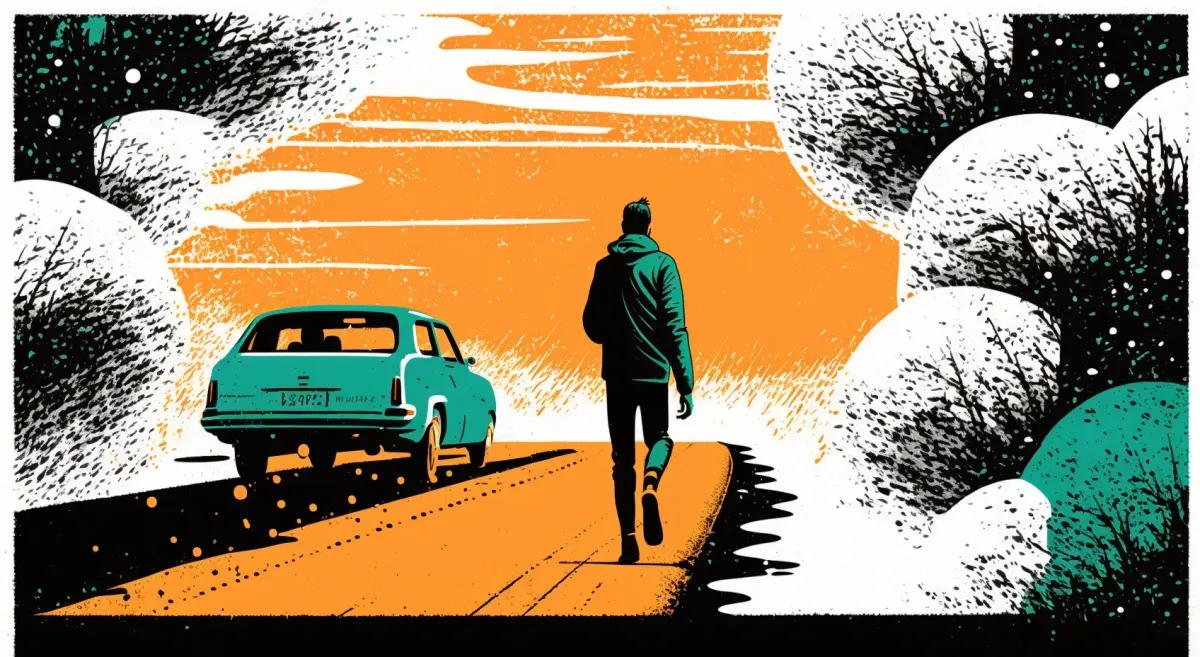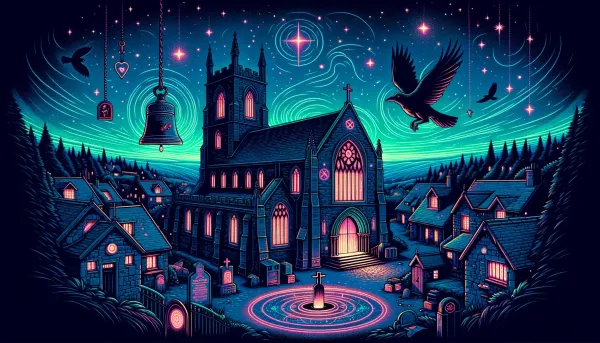The 7-Point Story Structure and Flashlight Outlining

Imagine setting out on an open road, the horizon stretching out before you, filled with endless possibilities. Just as embarking on a road trip can be a thrilling adventure, so is the journey of writing a story.
Both require a blend of careful planning and spontaneous decisions.
You need a map to guide you to your main destinations, but there's also the allure of the unexpected detours that can lead to the most memorable moments.
In a recent post on inspiration garden, I discussed several techniques for mapping our narrative path. Today I'll take this analogy a step further, using the 7-Point Story Structure as our roadmap.
One way to strike a balance between structure and exciting exploration is to combine the 7-point story structure with the flashlight outline. As we explore this, think of each of the story points as a landmark on your journey, and the spaces in between as the open road that is waiting to be discovered.
Overview of the 7-Point Story Structure
The 7-Point Story Structure is a popular method for outlining a narrative. It provides a clear framework that ensures a story has all the necessary elements to be compelling and complete. The structure typically includes:
- Hook: Introduce the main character in his or her normal world.
- Plot Point 1: The event that sets the story in motion.
- Pinch Point 1: Put pressure on the protagonist by showing the strength of the antagonist.
- Midpoint: A pivotal moment that changes the protagonist's approach or understanding. It's the point in the story where the protagonist decides to act rather than react.
- Pinch Point 2: Further complications arise, increasing the tension.
- Plot Point 2: The final injection of new information before the climax.
- Resolution: The climax and tying up of loose ends.
Planning the trip: Charting Your Story's Journey
Just as every memorable journey begins with a destination in mind and a starting point, so too does a compelling story. Using the 7-Point Story Structure as a roadmap, let's begin the process of planning our narrative journey.
The Destination in Storytelling: Crafting the Perfect Resolution
Before you even set off on your journey, it's important to know where you're going. In storytelling terms, this means understanding the resolution of your story. What is the climax or result you want your readers to experience? By having a clear endpoint, you can work backwards and ensure that every plot point and character development leads to this conclusion.
Crafting the Perfect Hook: Setting the Stage for Your Narrative
Once you have your destination, it's time to decide where your journey begins. Your hook should be a stark contrast or juxtaposition to your resolution. This creates intrigue and sets up a transformative arc for your characters and plot. For example, if your story ends with a character finding inner peace after a tumultuous journey, your hook could introduce them in a state of chaos or conflict.
The Heart of Your Story: Identifying the Midpoint
With the beginning and end in place, you can now focus on the midpoint of the story. This is a pivotal moment that changes the trajectory of your story. It's the bridge between the beginning and the end, a significant event or revelation that drives the story forward. Think of it as the unexpected, breathtaking viewpoint you stumble upon on your journey that becomes the highlight of your journey.
First Major Twist: Introducing Turning Point 1
This is the event that sets your story in motion. It's the catalyst that pushes your characters out of their comfort zones and into the main action of the story. It's like that moment on your road trip when you turn off down a new road and set the tone for the adventures to come.
The Final Revelation: Navigating Turning Point 2
This is the last injection of new information before the climax. It's the last big twist or revelation that prepares the reader for the end of the story. Think of it as the signpost that tells you you're approaching your destination.
Raising the Stakes: The Role of Pinch Point 1
This is where you put pressure on the protagonist, show the strength of the antagonist and raise the stakes. It's like a sudden storm on your journey, testing their resolve and commitment to the journey.
Navigating Challenges: Understanding Pinch Point 2
Further complications arise, increasing the tension and reminding the reader of the power of the antagonist. It's like a roadblock or detour that forces you to find alternative routes and adapt to the challenges.
By planning your story in this way, you create a strong framework that ensures a coherent and engaging narrative. The spaces between these major points are where the flashlight outline comes into play, allowing for exploration, spontaneity and organic development.
A story like a good road trip
Imagine you're going on a road trip. The 7-point story structure represents the key destinations or stops you've planned along the way. These are non-negotiable points that you want to reach to ensure your journey is fulfilling and meaningful.
However, there's a lot of flexibility between these stops. This is where flashlight sketching comes in. You might decide to take a detour to visit a quaint town you have heard about, or you might decide to spend an extra day at a particularly beautiful beach. These decisions are made in the moment, based on how you feel and what you discover along the way.
In the context of writing, the 7 points are your planned stops, ensuring that your story remains coherent and focused. But the journey between these points is fluid. Flashlight outlining allows you to explore subplots, develop characters and introduce unexpected twists as you write, much like the spontaneous decisions you make on a road trip.
Combining the 7-Point Story Structure with Flashlight Outlining gives you the best of both worlds. You have a clear roadmap to guide your narrative, ensuring that you hit all the essential beats of your story. At the same time, you retain the freedom to explore and develop your story organically.
This approach can be particularly beneficial for writers who feel constrained by a rigid outline, but also fear getting lost without structure. It offers a balanced method that satisfies both the need for direction and the desire for creative freedom.
Every writer's process is unique, and there's no one-size-fits-all approach to outlining. However, by understanding and experimenting with different methods, you can find a technique that suits your style. Whether you're a meticulous planner or a spontaneous explorer, the combination of the 7-Point Story Structure and flashlight outlining offers a flexible yet structured approach to creating compelling narratives. Embrace the journey and let your story unfold in its own unique way.




